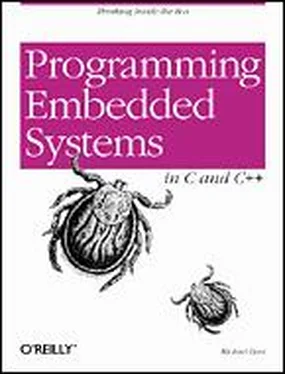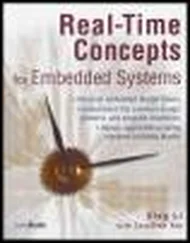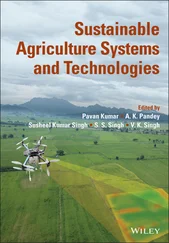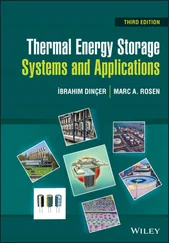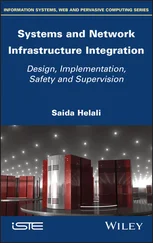Programming Embedded Systems in C and C++
First figure out why you want the students to learn the subject and what you want them to know, and the method will result more or less by common sense.
Richard Feynman
Embedded software is in almost every electronic device in use today. There is software hidden away inside our watches, VCRs, cellular phones, and even a few toasters. The military uses embedded software to guide missiles and detect enemy aircraft. And communication satellites, deep-space probes, and many medical instruments would've been nearly impossible to create without it.
Someone has to write all that software, and there are tens of thousands of electrical engineers, computer scientists, and other professionals who actually do. I am one of them, and I know from my personal experience just how hard it can be to learn the craft. There aren't any embedded software courses in school, and I've never been able to find a decent book about the subject in any library.
Each embedded system is unique, and the hardware is highly specialized to the application domain. As a result, embedded systems programming can be a widely varying experience and can take years to master. However, one common denominator across almost all embedded software development is the use of the C programming language. This book will teach you how to use C and its descendent C++ in any embedded system.
Even if you already know how to write embedded software, you can still learn a lot from this book. In addition to learning how to use C and C++ more effectively, you'll also benefit from the detailed explanations and source code solutions to common embedded software problems. Among the advanced topics covered in the book are memory testing and verification, device driver design and implementation, real-time operating system internals, and code optimization techniques.
I once heard an estimate that in the United States there are eight microprocessor-based devices for every person. At the time, I wondered how this could be. Are there really that many computers surrounding us? Later, when I had more time to think about it, I started to make a list of the things I used that probably contained a microprocessor. Within five minutes, my list contained ten items: television, stereo, coffee maker, alarm clock, VCR, microwave, dishwasher, remote control, bread machine, and digital watch. And those were just my personal possessions — I quickly came up with ten more devices I used at work.
The revelation that every one of those products contains not only a processor, but also software, was not far behind. At last, I knew what I wanted to do with my life. I wanted to put my programming skills to work developing embedded computer systems. But how would I acquire the necessary knowledge? At this point, I was in my last year of college. There hadn't been any classes on embedded systems programming so far, and I wasn't able to find any listed in the course catalog.
Fortunately, when I graduated I found a company that let me write embedded software while I was still learning. But I was pretty much on my own. The few people who knew about embedded software were usually too busy to explain things to me, so I searched high and low for a book that would teach me. In the end, I found I had to learn everything myself. I never found that book, and I always wondered why no one had written it.
Now I've decided to write that book myself. And in the process, I've discovered why no one had done it before. One of the hardest things about this subject is knowing when to stop writing. Each embedded system is unique, and I have learned that there is an exception to every rule. Nevertheless, I have tried to boil the subject down to its essence and present only those things that programmers definitely need to know about embedded systems.
This is a book about programming embedded systems in C and C++. As such, it assumes that the reader already has some programming experience and is at least familiar with the syntax of these two languages. It also helps if you have some familiarity with basic data structures, such as linked lists. The book does not assume that you have a great deal of knowledge about computer hardware, but it does expect that you are willing to learn a little bit about hardware along the way. This is, after all, a part of the job of an embedded programmer.
While writing this book, I had two types of readers in mind. The first reader is a beginner — much as I was when I graduated from college. She has a background in computer science or engineering and a few years of programming experience. The beginner is interested in writing embedded software for a living but is not sure just how to get started. After reading the first five chapters, she will be able to put her programming skills to work developing simple embedded programs. The rest of the book will act as her reference for the more advanced topics encountered in the coming months and years of her career.
The second reader is already an embedded systems programmer. She is familiar with embedded hardware and knows how to write software for it but is looking for a reference book that explains key topics. Perhaps the embedded systems programmer has experience only with assembly language programming and is relatively new to C and C++. In that case, the book will teach her how to use those languages in an embedded system, and the later chapters will provide the advanced material she requires.
Whether you fall into one of these categories or not, I hope this book provides the information you are looking for in a format that is friendly and easily accessible.
The book contains ten chapters, one appendix, a glossary, and an annotated bibliography. The ten chapters can be divided quite nicely into two parts. The first part consists of Chapter 1 through Chapter 5 and is intended mainly for newcomers to embedded systems. These chapters should be read in their entirety and in the order that they appear. This will bring you up to speed quickly and introduce you to the basics of embedded software development. After completing Chapter 5 , you will be ready to develop small pieces of embedded software on your own.
The second part of the book consists of Chapter 6 through Chapter 10 and discusses advanced topics that are of interest to inexperienced and experienced embedded programmers alike. These chapters are mostly self-contained and can be read in any order. In addition, Chapter 6 through Chapter 9 contain example programs that might be useful to you on a future embedded software project.
Chapter 1 introduces you to embedded systems. It defines the term, gives examples, and explains why C and C++ were selected as the languages of the book.
Chapter 2 walks you through the process of writing a simple embedded program in C. This is roughly the equivalent of the "Hello, World" example presented in most other programming books.
Chapter 3 introduces the software development tools you will be using to prepare your programs for execution by an embedded processor.
Chapter 4 presents various techniques for loading your executable programs into an embedded system. It also describes the debugging tools and techniques that are available to you.
Chapter 5 outlines a simple procedure for learning about unfamiliar hardware platforms. After completing this chapter, you will be ready to write and debug simple embedded programs.
Chapter 6 tells you everything you need to know about memory in embedded systems. The chapter includes source code implementations of memory tests and Flash memory drivers.
Читать дальше
